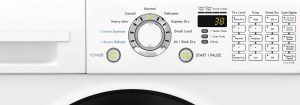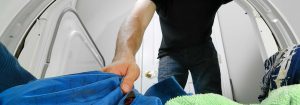The price range for tumble dryers can vary from a few hundred pounds for basic models to over two thousand pounds for high-capacity, energy-efficient, and feature-rich models. Deciding whether to replace or repair a tumble dryer depends on several factors.
Repairing a tumble dryer instead of buying a new one can offer several advantages and benefits. If the appliance is relatively new and still within its expected lifespan, it often makes sense to opt for repairs. For repairs that can extend the appliance’s life significantly, it may be more cost-effective to choose repair over replacement.
Additionally, repairs can provide a quicker solution to getting your dryer back in working order compared to the time it takes to research, purchase, and deliver a new appliance.
Also, from an environmental standpoint, repairing an appliance can be more sustainable than replacing it. If the appliance is repairable and continues to meet your needs, fixing it reduces waste.
Sometimes, the cost of repairs may outweigh the benefits, especially if the appliance is old or has a history of frequent breakdowns.
If the appliance is near the end of its expected lifespan (typically 10-15 years) and is experiencing significant issues, replacing it with a newer, more energy-efficient model may be a better long-term investment.
Before making a decision, it may be beneficial to obtain a professional assessment of the current tumble dryer’s condition and the estimated cost of repairs.
What are the parts most likely to break?
A clothes dryer is a complex appliance with various components, and several parts can experience issues over time. The following is a list of internal dryer components that may require repair or replacement to restore its functionality to peak efficiency.
1. Heating element: The heating element is responsible for generating heat to dry the clothes. Over time, it can burn out or become faulty, resulting in a lack of heat.
2. Thermal fuse: The thermal fuse is a safety device that trips if the dryer overheats. A blown thermal fuse can cause the dryer to stop heating.
3. Motor: The motor is responsible for turning the drum and operating the blower. A faulty motor may result in the drum not turning or the dryer not starting.
4. Drive belt: The drive belt connects the motor to the drum. If the belt is frayed or broken, the drum won’t turn.
5. Door switch: The door switch ensures that the dryer stops when the door is opened. A faulty door switch can prevent the dryer from starting or stopping.
6. Rollers and bearings: Rollers and bearings support the drum’s rotation. Worn-out or damaged rollers and bearings can cause squeaking or grinding noises.
How often do dryers need maintenance?
Regular maintenance can significantly extend the lifespan of your tumble dryer. Check and clean the venting system and the lint filter regularly. A clogged lint filter not only reduces efficiency but can also pose a fire hazard.
Consider scheduling a professional inspection or maintenance service annually, especially if you notice any unusual noises, reduced efficiency, or other issues.








